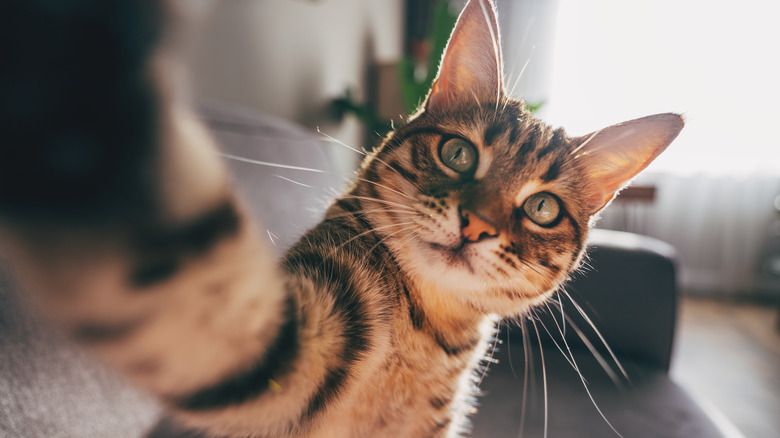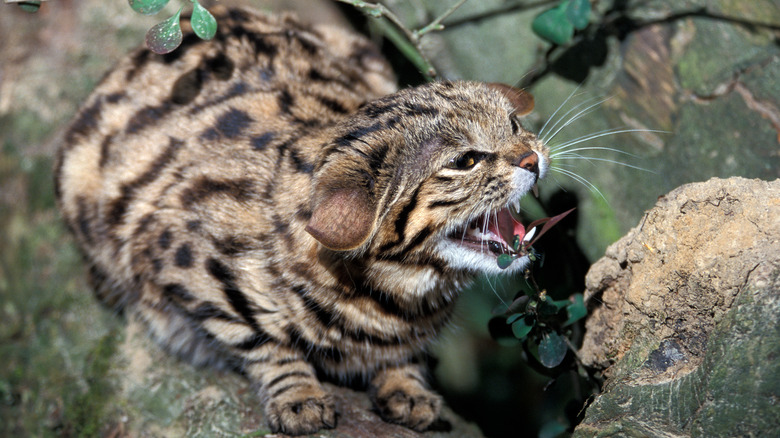The Deadliest Cat In The World Is Smaller Than You Think
When you think about the deadliest cat in the world, the first species that may come to mind is a cheetah, leopard, lion, or tiger. However, among the world's deadliest animals that might surprise you is a cat that's much smaller. You would never expect the African black-footed cat (Felis nigripes) to be deadlier than these larger felines.
The black-footed cat, which is native to southern Africa, grows to a mere 14 to 20 inches with a weight of just 2.2 to 5.5 pounds. Take a look at these comparison stats to get an idea of its relative size. Cheetahs can be 44 to 56 inches long and weigh 75 to 140 pounds, while tigers can measure up to 10 feet long and weigh up to 660 pounds. By weight, the black-footed cat doesn't even hold a candle to the largest domestic cat breed, the Maine coon which can weigh 12 to 22 pounds and be 19 to 30 inches long. So, what makes this cat so lethal?
According to the "Super Cats" miniseries, which is part of the series "Nature" on PBS, it's the 60% success rate that makes them the deadliest of all the felines. The African black-footed cat has "superb night vision," can walk 20 miles in a single night while searching for food (farther than any other small cat), and responds "to the smallest of sounds." Finding "almost anything that moves" as a potential meal, these felines will eat everything from locusts to prey that's larger than them. The biggest prey observed by researchers to date has been a Cape hare, which, at 8 to 10 pounds, weighs more than the cat.
The hunting habits of the African black-footed cat
As animals that are carnivores, F. nigripes have a remarkable appetite and spend about 70% of their time hunting at night with only brief rest periods. The species even hunts in all weather, no matter the temperature, using various hunting styles. The felines may sit next to rodent dens for an hour, ready to catch anything that moves. Luke Hunter, the chief conservation officer at global wildcat conservation organization Panthera, told Live Science, "They wait for up to 2 hours, absolutely immobile, just silently waiting at the burrow for a rodent to appear. And then they nab it."
Or, they move so slowly while stalking their prey that they barely disturb the tufts of grass. On the other hand, the cats may move swiftly to scare prey out of cover. When they hunt birds, they get as close to the ground as possible (practically flat). They quietly place their feet just right so that they can rapidly sprint and jump to catch the birds as soon as they take off. The vertical leap that "Super Cats" on PBS captured is quite impressive.
With all of these hunting techniques, black-footed cats catch some sort of prey an average of every 50 minutes. Every night, they can kill 10 to 14 small birds and rodents, which consist of about 98% of their diet. The other 2% includes insects, reptiles, and spiders. If they happen to catch an animal that's too big for them to eat in one sitting, they'll take it to a nearby burrow or den and cover it with grass or sand to be eaten for up to three nights. Best of all, they do it in style: After the felines make a successful kill, they set aside some time for grooming.

